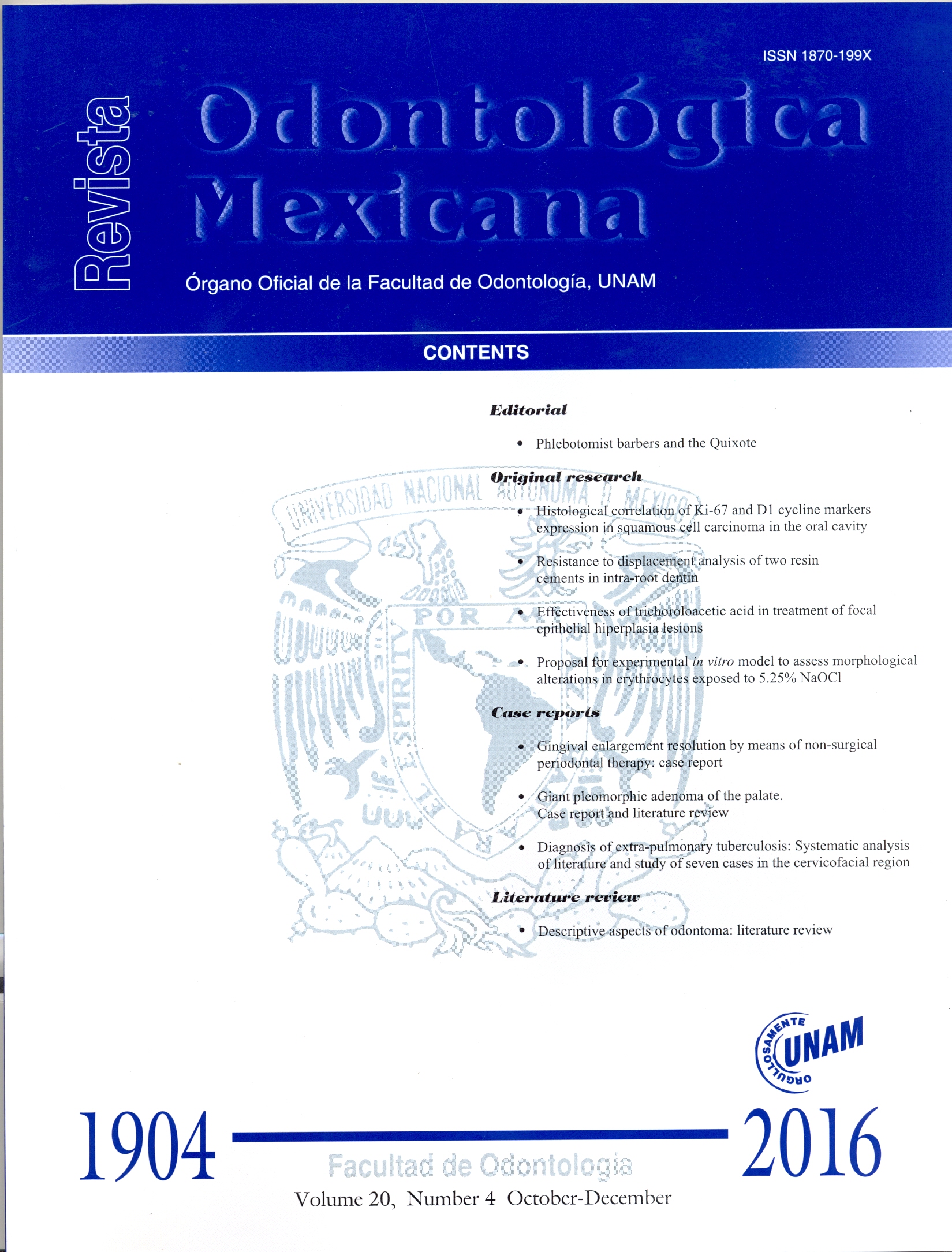Histological correlation of Ki-67 and D1 cycline markers expression in squamous cell carcinoma in the oral cavity
Contenido principal del artículo
Resumen
Introduction: Oral squamous cell carcinoma (OSCC) is a malignant neoplasia originated in the epithelium’s keratocytes. Early biopsies reveal dysplastic mitotic keratocytes and sub-epithelial infl ammatory infiltrate which progress towards a loss of basal membrane.
Nevertheless, hematoxillin and eosin (H&E) histological diagnosis does not show suitable clinical correlation; this aspect improves when molecular markers such as Ki-67 and cyclin D1 are used. The aim of
the present study was to correlate histological description of OSCC cases with Ki-676 and cyclin D1 expression. Material and methods:
Twelve patients with lesions suggestive of oral cancer were analyzed, patients with OSCC diagnosis were included in the study. Single biopsies were taken, observing histological and technical processing for paraffin cuts, coloration with H&E and immunohistochemical coloration with cyclin D1 and Ki-67. Three patients met inclusion criteria, they were named C1, C2 and C3. OSCC type was classifi ed according to the American Joint Committee on Cancer. Results: Histologically, C1 case was classifi ed as type II OSCC. Cases C2 and C3 were classifi ed as type I OSCC. Immunohistochemical analysis for C1 revealed Ki-67 positive and cyclin D1 negative; C2 exhibited Ki-67 negative and cyclin D1 positive, and C3 showed Ki-67 positive and cyclin D1 negative. Conclusions: Search for markers such as Ki-67 and cyclin D1 in pre-established OSCC diagnoses can influence histological results, contributing thus to more accurate diagnosis and treatment for the patients.
Detalles del artículo
Citas en Dimensions Service

Revista Odontológica Mexicana por Universidad Nacional Autónoma de México se distribuye bajo una Licencia Creative Commons Atribución-NoComercial-SinDerivar 4.0 Internacional.
Basada en una obra en http://revistas.unam.mx/index.php/rom.
